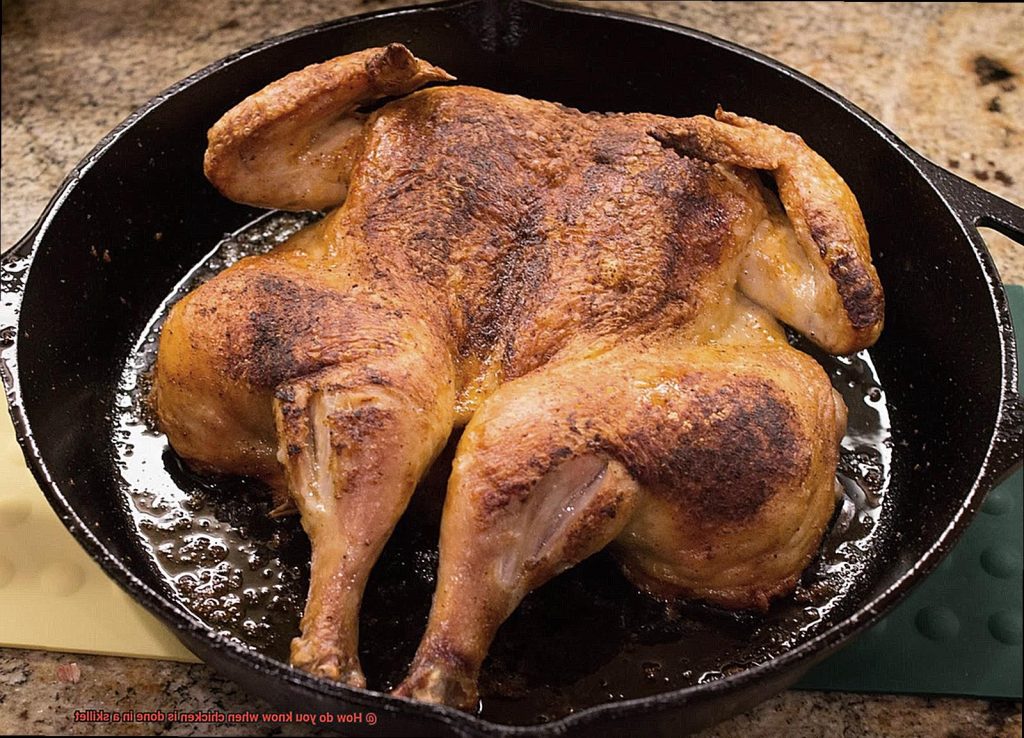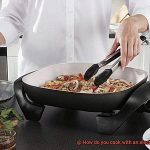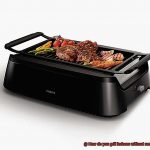Picture this: the sound of sizzling chicken in a hot skillet, its aroma filling your kitchen with anticipation. As you flip the chicken breast over, you wonder if it’s cooked through and safe to eat. But fear not, achieving that perfect balance of golden-brown exterior and juicy interior is within reach.
The secret lies in reading the internal temperature of the chicken instead of relying on guesswork or visual cues. Undercooked poultry can harbor harmful bacteria, while overcooked chicken can be dry and tough. So, how do you know when your chicken is done in a skillet?
In this blog post, we’ll guide you through everything you need to know about cooking chicken in a skillet. We’ll discuss why internal temperature is essential, what temperature to aim for, and how long to cook chicken to perfection. Plus, we’ll explore various methods for testing the chicken’s temperature – from using an instant-read thermometer to a meat thermometer.
By the end of this post, you’ll be able to achieve perfectly cooked chicken every time – leaving your family and dinner guests asking for seconds.
Contents
What Is a Meat Thermometer and How to Use It?
Fear not. A meat thermometer is the kitchen tool you need in your life.
A meat thermometer is a device used to measure the internal temperature of meat during cooking, ensuring it’s safe to eat and perfectly cooked. There are various types of meat thermometers available, including the digital instant-read and dial thermometers.
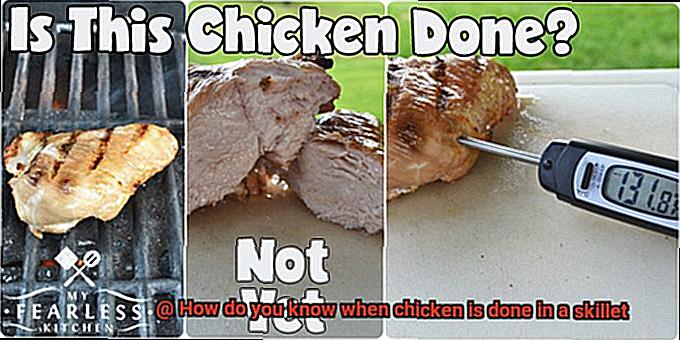
Using a meat thermometer is simple. Insert the probe into the thickest part of the chicken without touching any bones, wait for a few seconds until the temperature stabilizes, and then read the temperature on the thermometer display. The recommended safe internal temperature for cooked chicken is 165°F (74°C).
Not only does using a meat thermometer eliminate guesswork and reduce the risk of food poisoning, but it also ensures your chicken is moist and tender. However, it’s crucial to clean your thermometer thoroughly after each use to avoid cross-contamination and maintain its accuracy.
In addition to using a meat thermometer, allowing your chicken to rest for a few minutes after cooking is also essential. This allows the juices to distribute evenly throughout the meat, resulting in even more delicious and juicy chicken.
To summarize:
- A meat thermometer is an essential kitchen tool for perfectly cooked and safe-to-eat chicken.
- There are different types of meat thermometers available.
- Insert the probe into the thickest part of the chicken without touching any bone.
- Wait for a few seconds until the temperature stabilizes, then read the temperature on the display.
- The recommended safe internal temperature for cooked chicken is 165°F (74°C).
- Clean your thermometer thoroughly after each use.
- Allow your chicken to rest for a few minutes after cooking for even more delicious results.
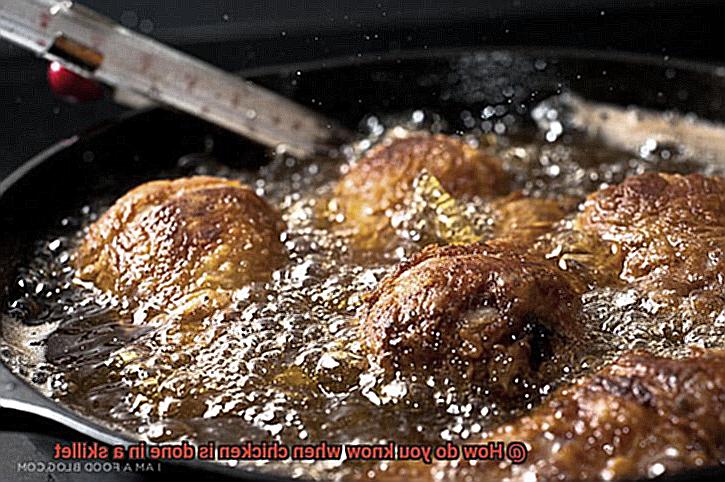
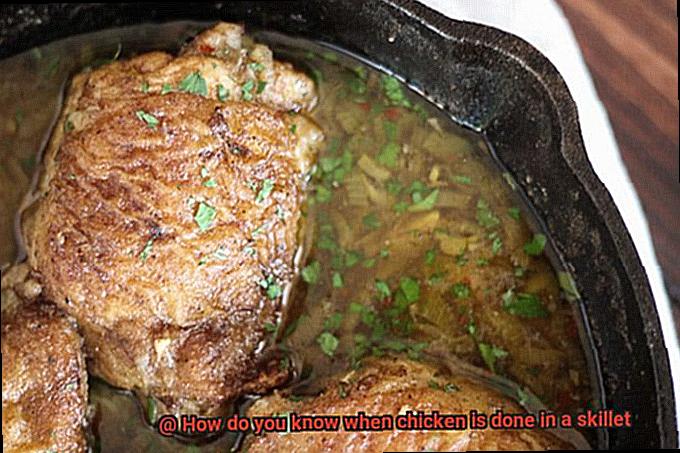
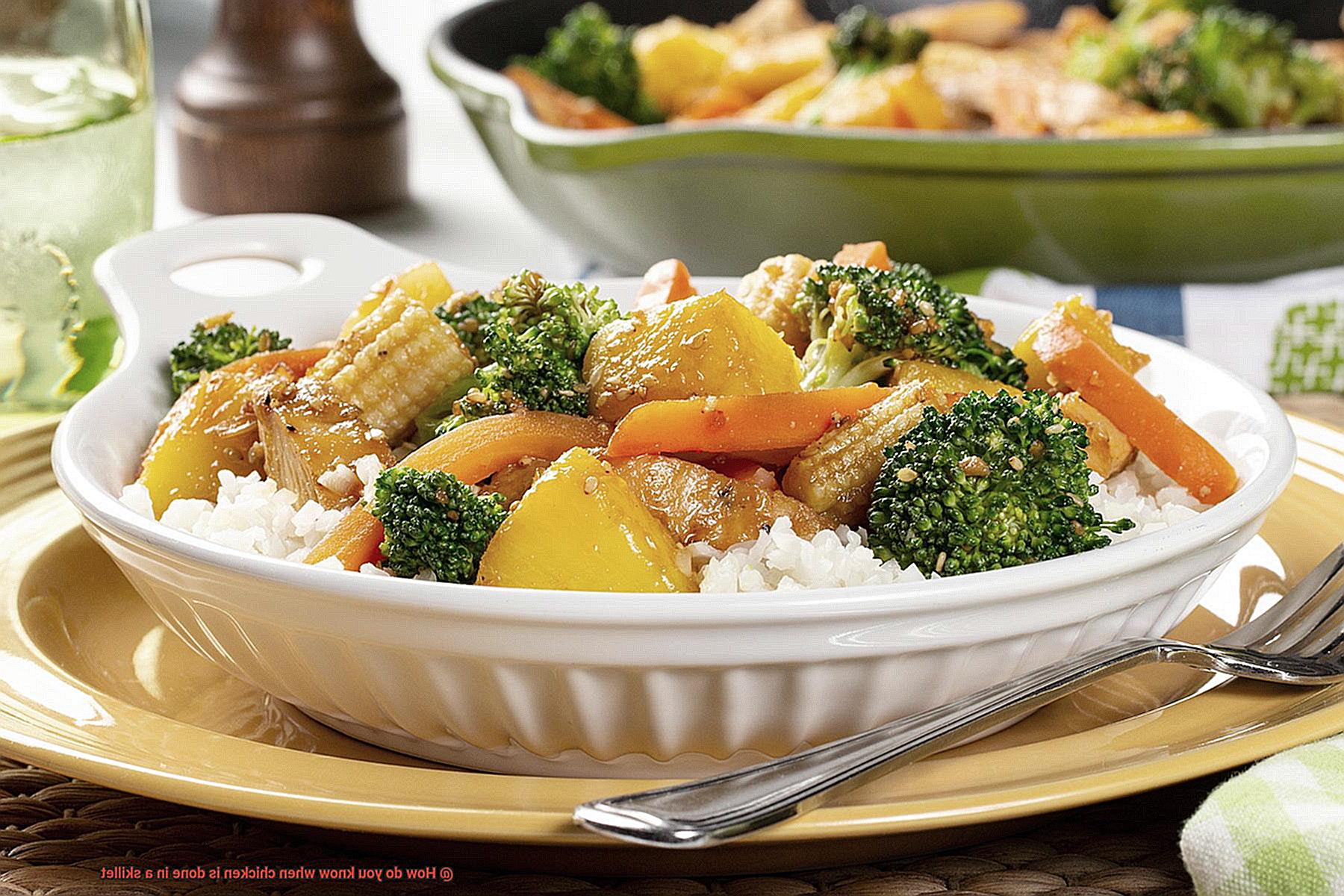
The Internal Temperature of Chicken Should Reach 165°F (75°C)
The answer lies in the internal temperature, and the trusty tool that will help you achieve it is the meat thermometer. Say goodbye to the days of dry, overcooked or undercooked chicken with this superhero of kitchen tools.
Using a meat thermometer is crucial in ensuring that your chicken is fully cooked and safe to consume. By inserting the thermometer into the thickest part of the chicken, you can get an accurate reading and make sure that it has reached 165°F (75°C), which is the minimum internal temperature required for safe consumption.
But why is 165°F (75°C) specifically important? At this temperature, any harmful bacteria such as Salmonella and Campylobacter will be destroyed, reducing the risk of foodborne illness. Therefore, it’s crucial to make sure that your chicken reaches this temperature to guarantee its safety.
It’s important to note that even if the chicken appears cooked on the outside, it may not be fully cooked on the inside. This is where the meat thermometer comes in handy as it ensures that you’re not relying on guesswork or appearance to determine if the chicken is fully cooked.
Another tip to ensure that your chicken is enjoyable to eat is to let it rest for a few minutes after cooking. During this time, the residual heat will continue to cook the chicken, and any juices will redistribute throughout the meat, resulting in a more flavorful and moist final product.
To summarize, here are some key takeaways:
- Use a meat thermometer to measure the internal temperature of your chicken accurately.
- Make sure that the internal temperature reaches 165°F (75°C) for safe consumption.
- Let your chicken rest for a few minutes after cooking for optimal flavor and moisture.
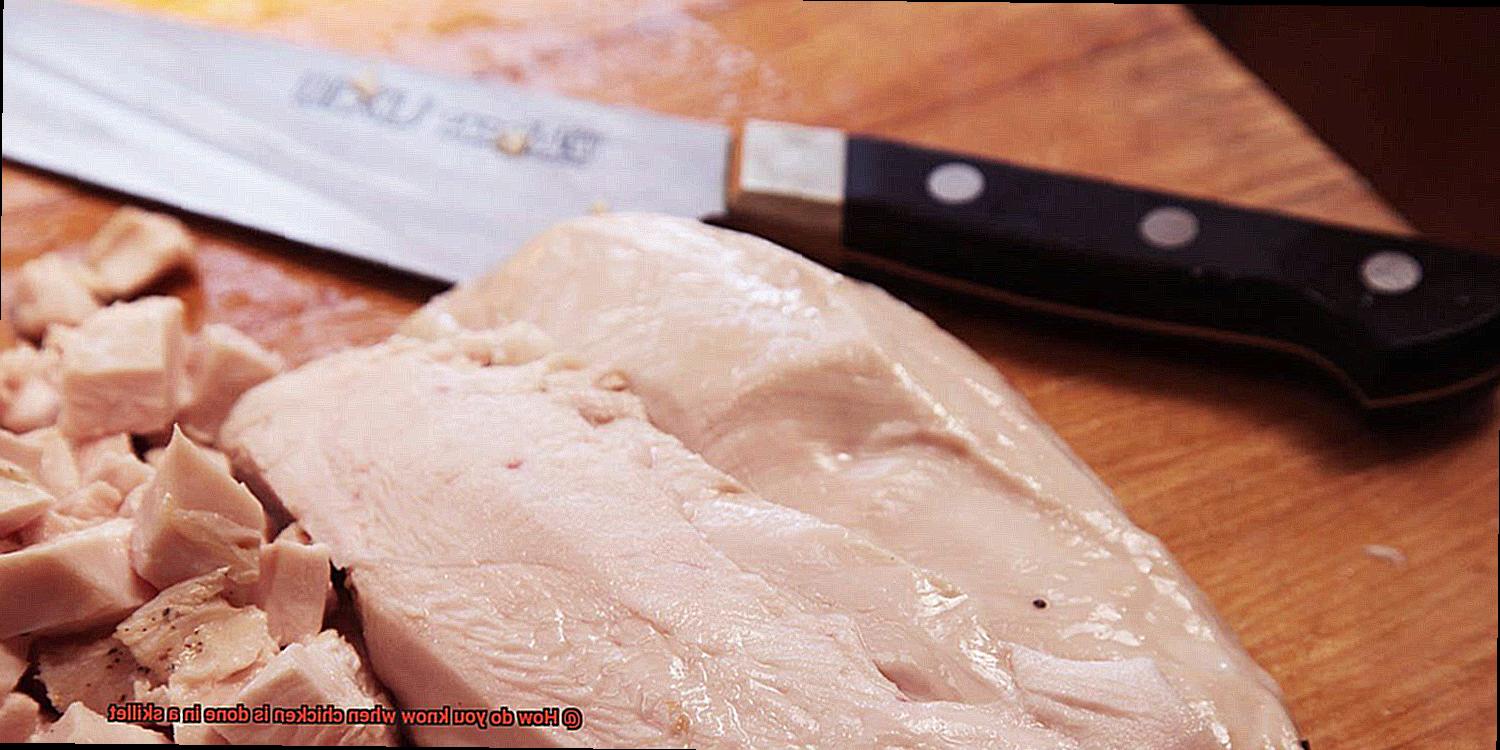
Check the Temperature Without a Meat Thermometer
Look no further, because I have some expert tips on how to check your chicken’s temperature without one.
First things first, it is crucial to ensure that your chicken is cooked thoroughly to avoid any risk of food-borne illnesses. One method to check for doneness is by cutting into the thickest part of the chicken and examining the color of the meat and any juices that run out. If the meat appears white and the juices are clear, this is usually a good indication that your chicken is fully cooked. However, keep in mind that some parts of the chicken may still appear pink even when fully cooked, so this method is not always foolproof.
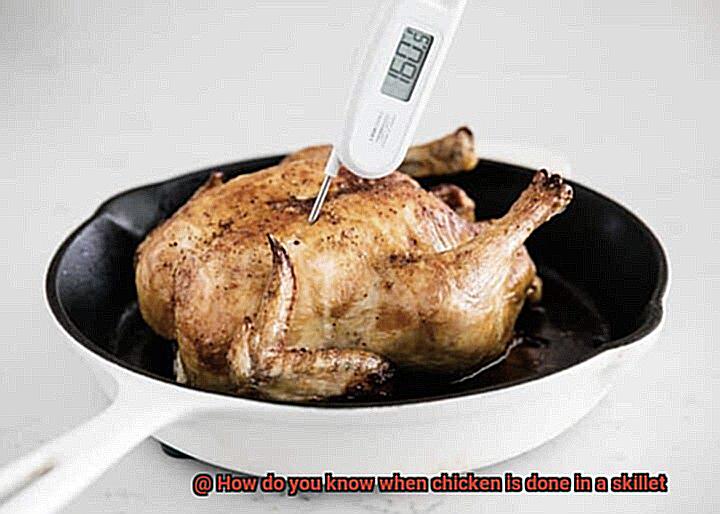
Another approach is to use a fork or knife to pierce the thickest part of the chicken and observe the color of the juices. If they are clear, this is typically a sign that your chicken is fully cooked. However, if they are pink or red, it may be necessary to continue cooking until they turn clear.
Remember that cooking time can vary depending on factors like the size and thickness of your chicken pieces and the heat setting of your skillet. To avoid under- or overcooked chicken, use a timer and cook your chicken for a set amount of time before checking its temperature.
In summary, while using a meat thermometer is the most accurate way to ensure that your chicken is fully cooked and safe to eat, you can also use these alternative methods to check its temperature without one. By examining the color and consistency of your chicken’s juices or using a timer, you can guarantee that your chicken is cooked thoroughly and ready to be savored without any worries about safety.
Avoid Overcooking for Moist and Tender Chicken
To avoid overcooking your chicken in a skillet, there are some tips and tricks that will help you achieve moist and tender chicken every time.
Firstly, use a meat thermometer to ensure that the internal temperature of the chicken reaches 165°F (74°C). This foolproof method guarantees perfectly cooked chicken. Make sure to insert the thermometer into the thickest part of the meat, avoiding any bones.
If you don’t have a meat thermometer on hand, there are other ways to tell if your chicken is cooked through. Look for visual cues such as clear juices and no pink or red coloring. When gently pressed, the chicken should feel firm but still have some give, indicating that it’s cooked through.
Cooking chicken over high heat may seem like a good idea for a crispy exterior, but it can cause the outside to cook too quickly while leaving the inside undercooked. Instead, cook your chicken over medium heat and flip it frequently for even cooking on all sides.
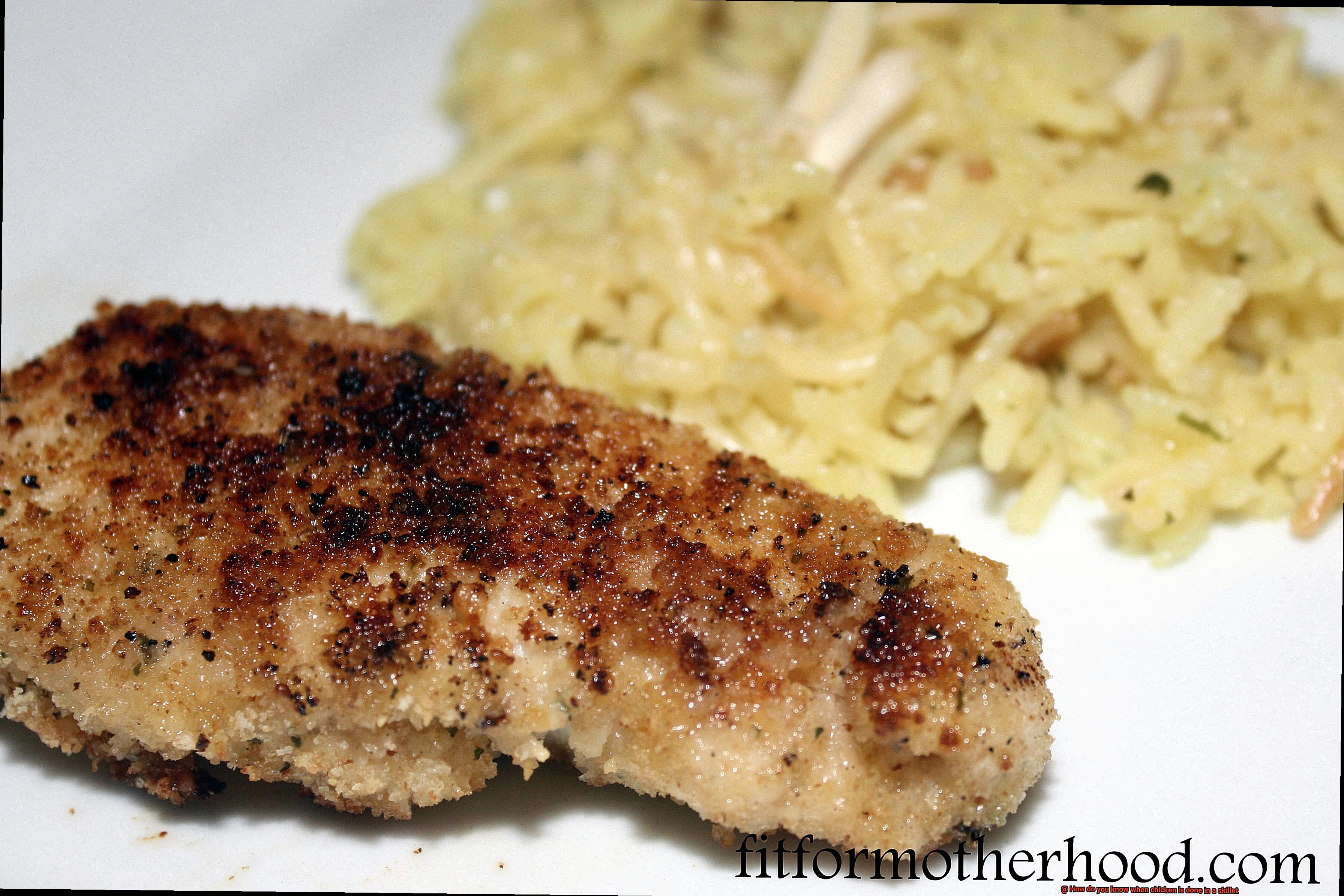
Once your chicken is done cooking, allow it to rest for a few minutes before serving. This step is crucial as it allows the juices to redistribute throughout the meat and helps keep it moist and tender. Covering the chicken with foil or a lid while it rests can also help trap in some of the heat and moisture.
Different Ways to Cook Chicken in a Skillet
Skillet cooking is a quick and easy way to prepare chicken, and there are several methods to try. The first is pan-searing, which involves cooking the chicken on high heat until both sides are browned and crispy. This method works well for boneless, skinless chicken breasts or thighs. To pan-sear chicken, heat a skillet over high heat until it is hot. Add a small amount of oil to the skillet and place the chicken in the pan. Cook for 3-4 minutes on each side until both sides are browned and crispy. Use a meat thermometer to check if the internal temperature of the chicken has reached 165°F before serving.
Another popular method is sautéing, which involves cooking the chicken over medium heat with a small amount of oil or butter. This method works well for bone-in chicken pieces or marinated chicken. Begin by heating a small amount of oil or butter in a skillet over medium-high heat. Place the chicken in the pan and cook for 5-7 minutes on each side until it is cooked all the way through. Again, use a meat thermometer to check if the internal temperature of the chicken has reached 165°F before serving.
For those who prefer a healthier cooking method, poaching is a great option. This involves simmering the chicken in a flavorful liquid until it is cooked through and tender. To poach chicken, place it in a skillet with enough liquid (such as water, broth, or wine) to cover the chicken. Bring the liquid to a simmer and cook until the internal temperature of the chicken has reached 165°F. This method is great for infusing flavor into the chicken from the cooking liquid.
Braising is another way to cook tougher cuts of chicken like drumsticks or thighs. Braising involves cooking the chicken in liquid over low heat until it is tender and flavorful. To braise chicken, first brown it on both sides in a hot skillet. Then, add enough liquid (such as broth or wine) to cover the chicken and simmer over low heat for 30-40 minutes until the chicken is cooked all the way through. Use a meat thermometer to check if the internal temperature of the chicken has reached 165°F before serving.
No matter which method you choose, it is crucial to ensure that your chicken is fully cooked before serving. The best way to do this is by using a meat thermometer. Insert the thermometer into the thickest part of the chicken without touching the bone. If the temperature reads 165°F or higher, then the chicken is done and can be removed from the skillet. If not, continue cooking until it reaches 165°F. Additionally, cut open the chicken to make sure that there are no pink or raw areas left inside.
Tips for Perfectly Cooked Chicken
Cooking chicken in a skillet can be an intimidating task, but with the right tips, you can become a pro at it. Here are five sub-sections that will help you achieve perfectly cooked chicken every time.
Use a Meat Thermometer
Using a meat thermometer is the most accurate way to determine if your chicken is cooked through. It’s essential to insert the thermometer into the thickest part of the chicken without touching the bone to ensure an accurate reading. The internal temperature should reach 165°F (74°C) for safe consumption. This tip is especially useful if you’re new to cooking chicken in a skillet and want to avoid undercooked or overcooked chicken.
Look for Clear Juices
If you don’t have a meat thermometer, look for clear juices running from the chicken instead of pink or red. If the juices are still pink or red, continue cooking until they run clear. This tip is a simple and effective way to tell if your chicken is cooked through and safe to eat.
Check the Texture
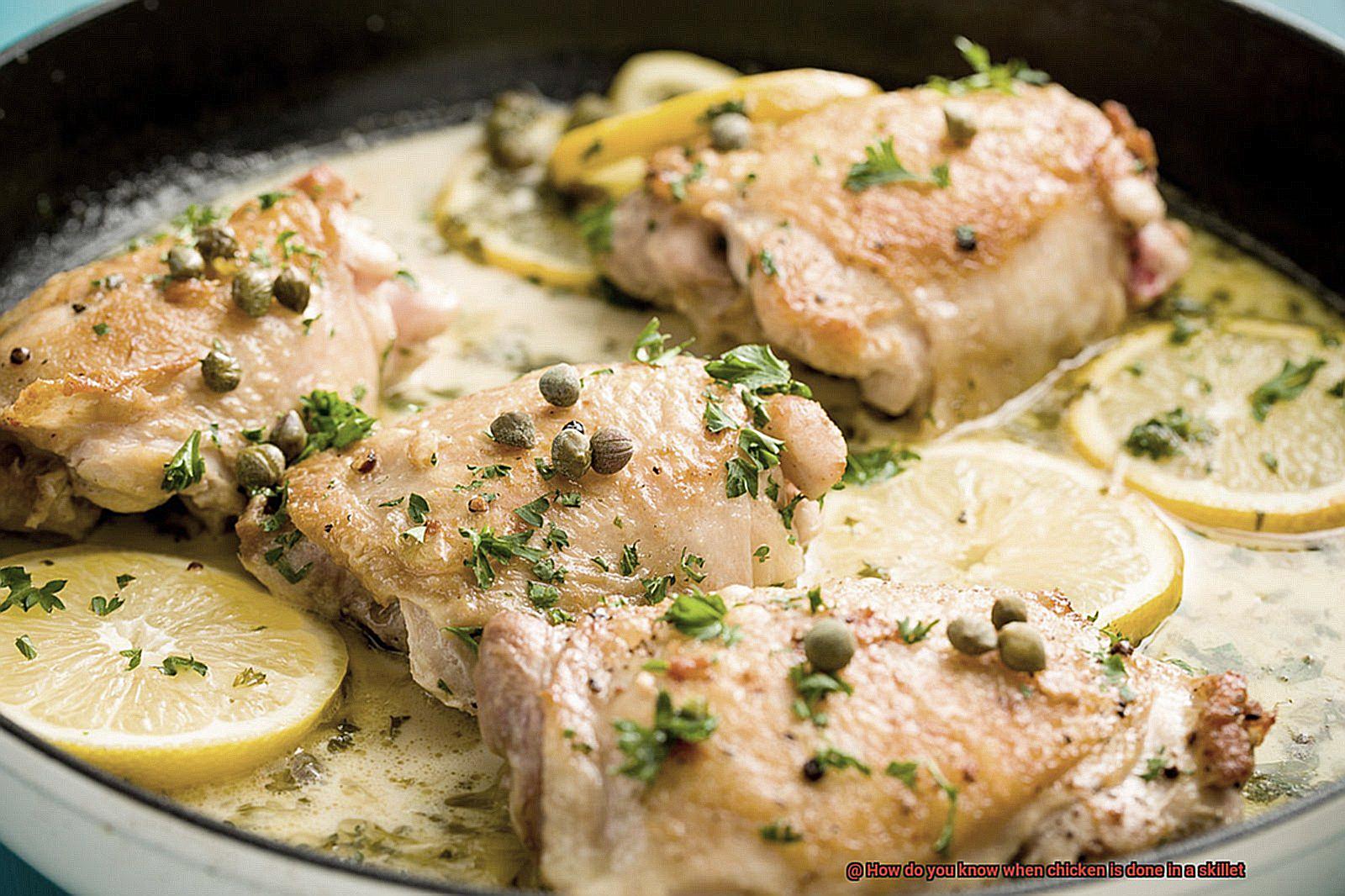
Checking the texture of your chicken is crucial in determining whether it’s perfectly cooked or not. Overcooked chicken will be dry and tough, while undercooked chicken will be rubbery and hard to chew. When the chicken is cooked through, it should be firm yet juicy. This tip allows you to ensure that your chicken is not only safe to eat but also deliciously tender.
Use the Right Temperature
Using the right temperature is key when cooking chicken in a skillet. Chicken should be cooked at medium-high heat to ensure that it cooks evenly and doesn’t dry out. Using high heat may cause the outside of the chicken to burn while leaving the inside undercooked, resulting in uneven cooking.
Let It Rest
Letting your chicken rest for a few minutes after cooking allows the juices to redistribute throughout the meat, resulting in a more tender and juicy chicken. Skipping this step may cause the juices to escape, leaving your chicken dry and tough. This tip is a simple yet crucial step in achieving perfectly cooked chicken in a skillet.
Importance of Proper Food Handling and Safety
Preparing a delicious chicken meal in a skillet requires more than just culinary skills. Safety measures must be taken to ensure that the food is not only tasty but also safe to consume. Raw chicken harbors harmful bacteria such as Salmonella and Campylobacter, which can cause food poisoning if not handled and cooked properly. Here are some essential tips to help you maintain proper food handling and safety when cooking chicken in a skillet.
Firstly, wash your hands thoroughly with soap and warm water for at least 20 seconds before handling the chicken. This helps prevent the spread of bacteria from your hands to the chicken and other surfaces in your kitchen.
Secondly, use a food thermometer to check the internal temperature of the chicken. To be safe, the chicken should reach an internal temperature of 165°F (74°C) to kill any harmful bacteria that may be present. Insert the thermometer into the thickest part of the meat, making sure not to touch any bones.
Thirdly, avoid cross-contamination by keeping raw chicken separate from other foods and using separate cutting boards and utensils for raw meat. Clean any utensils or surfaces that come into contact with raw chicken with hot, soapy water.
Finally, never wash raw chicken before cooking it. Contrary to popular belief, this practice spreads bacteria around your kitchen through splashing water.
kZu2ow3pCZw” >
Conclusion
In conclusion, achieving perfectly cooked and safe-to-eat chicken in a skillet is a breeze with the right tools and techniques. The key to success? Measuring the internal temperature of the chicken using a meat thermometer. Simply insert the thermometer into the thickest part of the meat without touching any bones for an accurate reading. And remember, 165°F (74°C) is the recommended safe internal temperature for cooked chicken.
But that’s not all. You can also test if your chicken is fully cooked by examining its color and texture or using a timer. And don’t forget to cook your chicken over medium heat, flip it frequently for even cooking on all sides, and allow it to rest for a few minutes after cooking.
Of course, proper food handling and safety measures are paramount when preparing chicken in a skillet. Washing hands thoroughly, avoiding cross-contamination, and never washing raw chicken before cooking are crucial steps in preventing foodborne illnesses.
By following these tips and tricks, you’ll be able to whip up deliciously moist and tender chicken that will leave your family and guests begging for more. So what are you waiting for?

